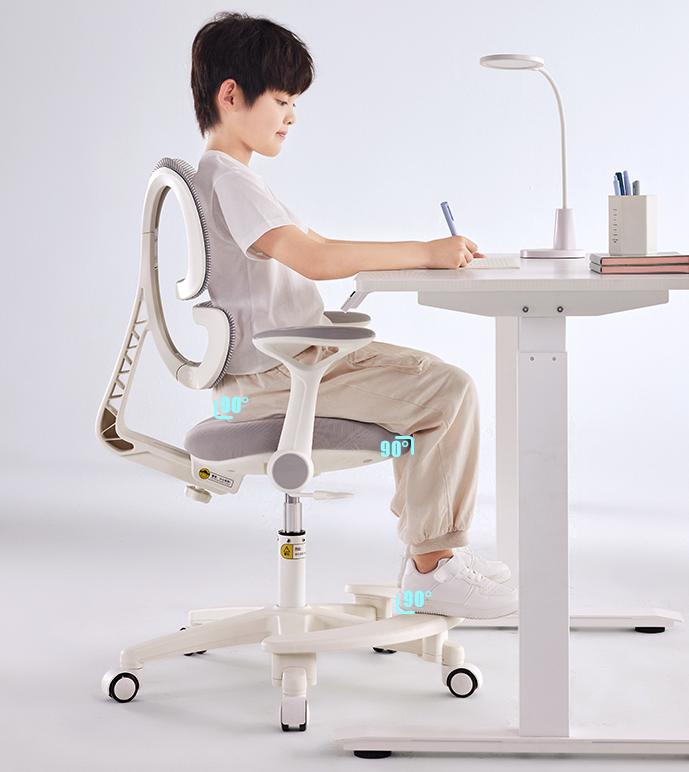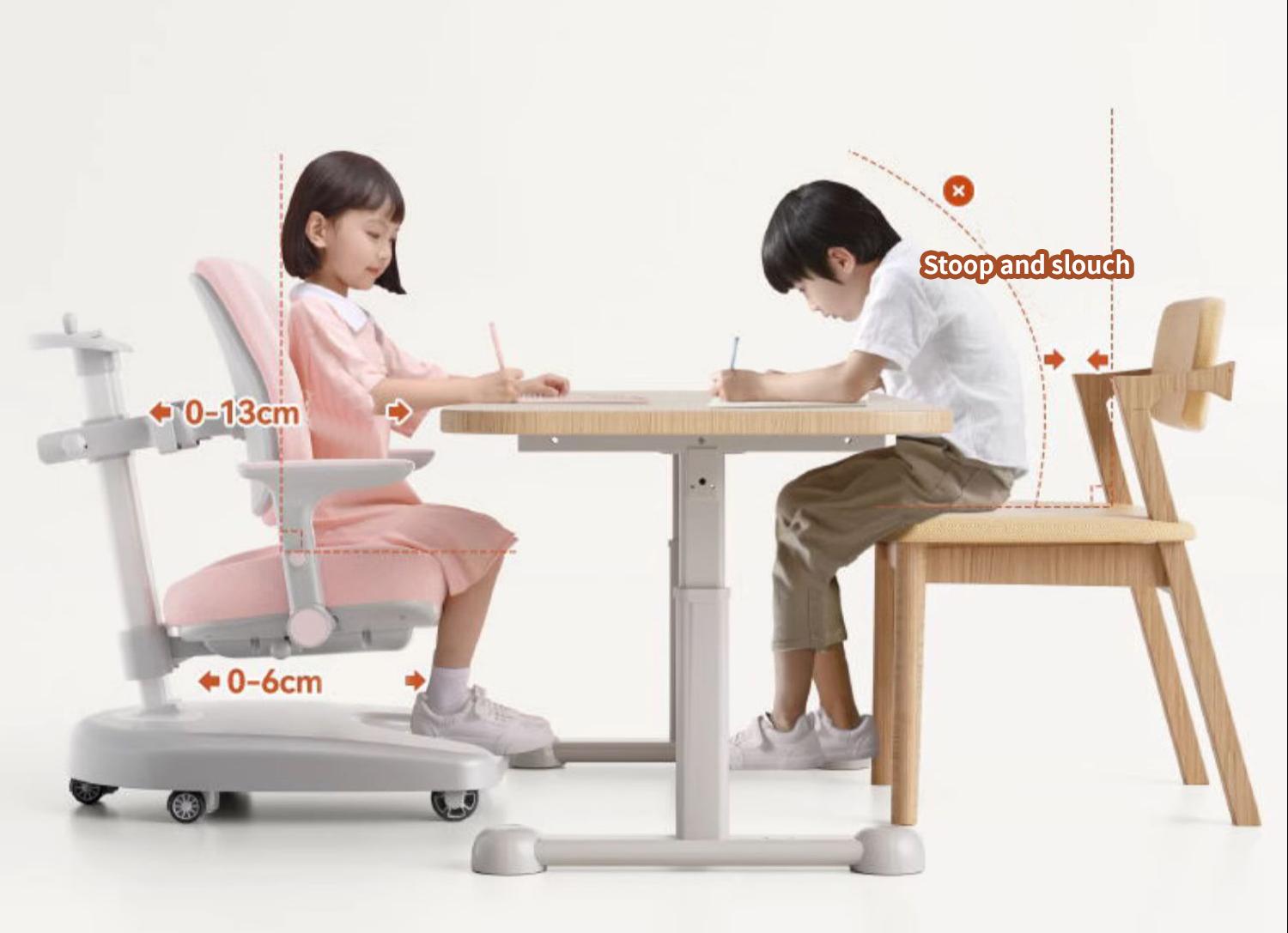This study compares the effects of traditional wooden chairs and ergonomic study chairs on children’s concentration during learning tasks. Through an experiment with 100 kids aged 8–12, we found ergonomic chairs significantly improved attention span, sitting stability, and comfort, proving that chair design matters for learning.

1. Why This Study Matters
Kids spend hours sitting for schoolwork, and their chairs affect both body and brain. We wanted to know: Does a standard wooden chair (common in classrooms) or a specially designed ergonomic study chair help kids focus better?
2. What Past Studies Show
Research has found ergonomic chairs reduce muscle pain by 37% and boost focus by 22% in students. Pediatric experts say good posture improves blood flow to the brain, making it easier to concentrate. But most studies miss 8–12-year-olds—a critical age when kids grow quickly both physically and mentally.
3. How We Tested It
Participants: 100 kids (50 boys, 50 girls), split into two groups.
Chairs Used:
Traditional Wooden Chairs: Fixed height, hard seat, straight back (like typical classroom chairs).
Ergonomic Study Chairs: Adjustable height, lumbar support, padded seat, armrests (meets safety standards).
Tasks: Kids did 45-minute sessions of reading, math, and writing while wearing activity trackers to measure fidgeting (squirming, moving around a lot).
4. The Results Were Clear!
① Better Focus with Ergonomic Chairs
Kids on ergonomic chairs got distracted 27% less often (e.g., less pen-playing or window-gazing).
They finished tasks 18% faster than those on wooden chairs.
② More Stable Sitting & Less Discomfort
Ergonomic chair users squirmed 53% less (the chair fit their bodies, so they didn’t need to adjust often).
42% fewer kids complained of discomfort (especially back and bottom pain) after 45 minutes.
③ Better Learning Outcomes
Math errors dropped by 15% in the ergonomic group (less distraction = fewer mistakes).
Creative writing improved by 21% (more words written, plus clearer sentences).
5. Why Ergonomic Chairs Work Better
The secret is adjustability and support:
Kids can tweak the height so their feet sit flat on the floor.
The lumbar support keeps their backs straight, preventing slouching.
Padded seats reduce pressure, so they forget about “sitting” and focus on learning.
When the body is comfy, the brain doesn’t waste energy on aches and pains—it stays locked on tasks!

6. Tips for Parents & Schools
Traditional chairs are common but not designed for growing kids. A one-size-fits-all chair can lead to slouching, distraction, and even dislike for studying. When choosing an ergonomic study chair:
✅ Pick one with adjustable height (grows with your child).
✅ Look for lumbar support and a padded seat.
✅ Ensure armrests are at a comfortable height (no shoulder shrugging!).
Conclusion: A good study chair isn’t just about comfort—it’s a tool for better focus. Spending a little more on an ergonomic chair can pay off in more efficient study time and healthier posture for years to come!

